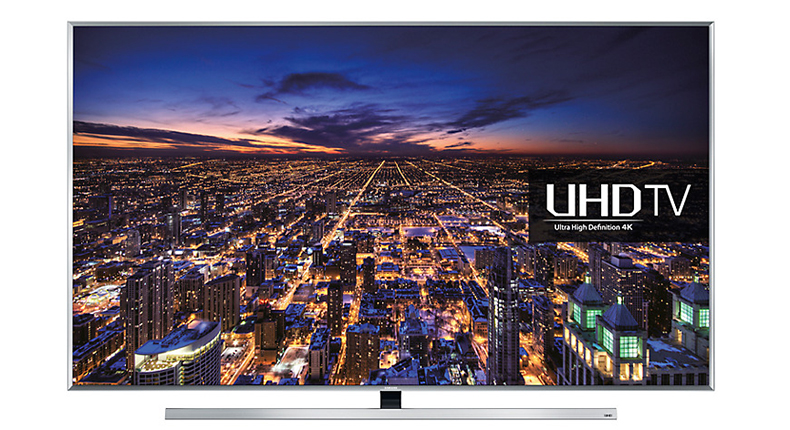Samsung rejects accusations of cheating on TV energy tests
Samsung has issued a statement firmly denying that it has used one of its power saving modes to improve results in lab tests for measuring the energy consumption of its TVs.

The accusation was made in an article published in today's Guardian, in which the newspaper claimed that "Samsung TVs appear more energy efficient in tests than in real life".
This morning Samsung hit back, saying that the motion lighting mode is a standard, out-of-the-box feature, not a test cheat or so-called defeat device.
"Earlier today, The Guardian newspaper in the UK suggested that one of the power-saving modes used in our TVs has been designed for regulatory lab tests, rather than real-world viewing. We firmly reject this suggestion, and in the interests of full transparency we have published additional information," says Samsung.
"The feature mentioned in the article is called 'motion lighting', which reduces power consumption by reducing screen brightness when the picture on the screen is in motion. It is a standard, out-of-the-box feature, which is switched on when the customer takes delivery of their TV, and remains on whenever the customer chooses to watch their TV in 'Standard' viewing mode."
Samsung says motion lighting "is not a test cheat and is not a setting that only activates during compliance testing. On the contrary, it is a default setting which works both in the lab and at home, delivering energy savings and helping us to reduce our environmental impact."
Motion lighting was introduced on all Samsung TVs in 2011. If a customer alters the TV's display settings or switches to a different viewing mode, then the motion lighting feature is disabled and this could lead to higher power consumption. It is up to the customer, says Samsung, to decide whether they want to prioritise picture performance or energy efficiency when watching their TV set.
MORE: Is TV energy testing flawed?
Get the What Hi-Fi? Newsletter
The latest hi-fi, home cinema and tech news, reviews, buying advice and deals, direct to your inbox.
In its article, The Guardian claims that independent lab tests found some Samsung TVs in Europe appeared to use less energy during official testing conditions than they do during real-world use. And the BBC has reported that ComplianTV, which carried out the tests, discovered that the power demands of one of Samsung's LCD TVs dropped from 70W to around 39W within a minute of the energy test starting.
We asked Samsung UK directly why this was the case and the firm issued a second statement with the follow explanation: “Motion lighting works when significant portions of the picture are changing from frame to frame, but it phases in gradually over 30 seconds so that the effects are not distracting to the viewer. This results in real-world energy savings – particularly watching fast moving content such as sport – but it also means that changes in power consumption are not instant.”
The European Commission says it will investigate any evidence of manufacturers cheating the tests and has said it will tighten energy efficiency regulations to outlaw the use of so-called 'defeat devices' on TVs and other consumer products.
We spoke to Stuart Graves, head of Samsung's QA laboratory in the UK, about the allegations. "ComplianTV did an energy consumption test and believed that our TVs were identifying the test footage used as part of the IEC62087 regulations [in order to get a better energy rating}. That is definitely not the case. Our TVs do not recognise the test footage, which is a ten-minute segment of video using an APL (average picture level) of 34 per cent to mirror average usage. We are not doing anything to influence the results."
In The Guardian article, the ComplianTV report [which does not name Samsung] is quoted as saying: “The laboratories observed different TV behaviours during the measurements and this raised the possibility of the TVs detecting a test procedure and adapting their power consumption accordingly. Such phenomenon was not proven within the ComplianTV tests, but some tested TVs gave the impression that they detected a test situation.” The underlining is ours, not theirs.
Graves is adamant that Samsung has not done anything to influence the test results: "The IEC (International Electrotechnical Commission) test does not involve any change of the TV settings - they are tested with the settings as they are when they come out of the box."
In Samsung's case, as it has already stated, that 'out-of-the-box' setting means that the motion lighting feature is switched on, and remains on in the customer's home unless they alter the TV's settings. So it is up to the user to decide how they want to balance energy consumption vs picture performance.
Many of the TVs we test at What Hi-Fi? have some sort of Eco setting and we often switch this off as it can make the pictures a bit dim by reducing the backlight levels (to save energy); we tend to prefer a brighter image, and obviously if we disable the Eco mode then the chances are energy consumption will go up.
This is a very different scenario from that of the VW emissions scandal, with which this is being compared by some commentators. No-one is suggesting Samsung has done anything illegal, and nor has it deliberately concealed what it is doing and thus misled the regulators and its customers.
Whether the energy consumption test itself is robust, and accurately reflects real-world usage, is another matter, but Samsung - like all TV manufacturers - has its TVs tested using the same clip of media content under IEC62087. The energy efficiency ratings are based on the power a TV uses while the video content - which contains a mix of fast- and slow-moving content shown at different brightness levels - is playing.
Andy is Global Brand Director of What Hi-Fi? and has been a technology journalist for 30 years. During that time he has covered everything from VHS and Betamax, MiniDisc and DCC to CDi, Laserdisc and 3D TV, and any number of other formats that have come and gone. He loves nothing better than a good old format war. Andy edited several hi-fi and home cinema magazines before relaunching whathifi.com in 2008 and helping turn it into the global success it is today. When not listening to music or watching TV, he spends far too much of his time reading about cars he can't afford to buy.

